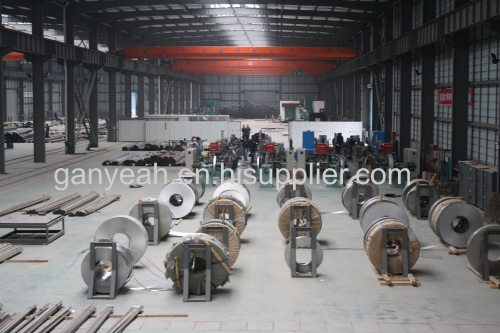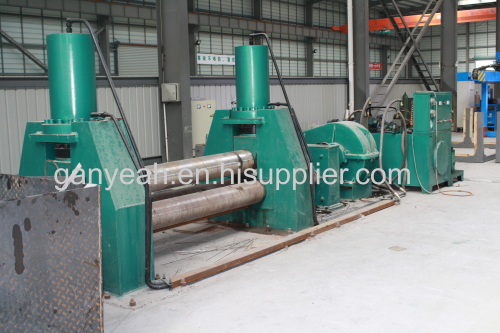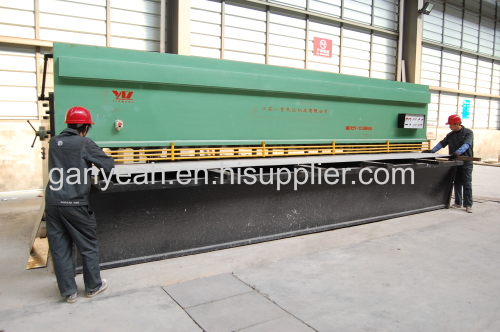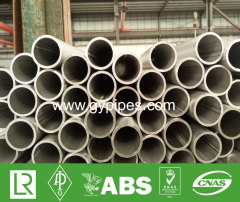Gas Tungsten Arc Welding Tube Pipe
When it comes to Gas Tungsten Arc Welding Tube Pipe, the selection of the filler metal to be use is important. Selecting the filler metal is all about enhancing the properties of the weld produced as well as meeting the requirements set out by the final application of the fabricated pipe.
Choosing filler metals with a low carbon content can help retain the resistance to corrosion in low carbon stainless steel alloys. Filler metals with higher carbon content is used in applications that require a higher strength, whereas filler metals with a higher silicon level is able to increase the puddle fluidity of the weld, increase the travel speeds as well as improve the tie-ins.
When selecting filler metals, a filler metal with low trace (also known as tramp) elements are important. These trace elements include phosphorus, tin, sulfur, arsenic an antimony - all which have an effect on resistance to corrosion.
In Gas Tungsten Arc Welding Tube Pipe, sensitization is the most common cause of the loss of resistance to corrosion.
Sensitization is influenced by:
The base metals (being joined)
The filler being used, and
The temperature at which the weld cools down.
The Use of Low Carbon Base and Filler Metal:
The use of low carbon base and filler metal will help to either reduce or completely eliminate carbon in the welding process. Note that this method is not always sufficient as carbon is an alloying factor in a number of applications.Minimizing the time the weld and heat affected zone spends at sensitization temperature ranges:
Generally, this temperature range will be between 500°C and 800°C. By minimizing the time spent at sensitization temperature zones or ranges, the less damage will occur as a result of the heat of the weld. Welding at the lowest possible temperature will aid in a faster cooling rate.he Use of Filler Metals with Special Alloying Elements:
By using these types of filler metals, the formation of chromium carbides can be prevented. An example of this would be niobium and titanium alloyed into the filler metal. Thus helps to prevent a reaction between carbon and chromium. Note that this elements do have a strong impact on toughness and strength and is subsequently limited in application. It is also important to note that this method delivers no benefits to the areas the farthest away from the zones affected by heat.
When carbon levels in the weld, as well as the heat affected zones, are raised, chromium carbides form. This in turns results in the prevention of the formation of the chromium layer, leading to corrosion or a loss in the required resistance to corrosion.
The three main ways in which sensitization is fought:
Gas Tungsten Arc Welding Tube Pipe requires a back purge of argon. In processes where cost does play an important role, nitrogen is also used, but note that nitrogen can lead to the formation of nitride compounds in the root of the weld. This formation of nitride compounds does influence resistance to corrosion.
This loss of corrosion resistance may be acceptable in certain applications (such as hydraulic fluid systems) where a risk of interior corrosion is low.
Normally, straight argon is recommended for stainless steel tube and pipe TIG welding processes.
Joint preparation is also a vital factor when it comes to welding stainless steel tubes and pipes. Trace elements of other (or foreign) materials incorporated into the weld joint will results in joint flaws, a reduced resistance to corrosion and a reduced strength.
The way in which the pipe is cut and beveled will also play a role on the weld. A lack of fit-up and the occurrence of gaps will lead to the welder having to add more filler metal. This adding of filler metal does not only reduce productivity, but also leads to a heat buildup in the work area.
Today, TIG welding is the best solution for joining stainless steel pipes and tubes, especially for high purity application tube or pipe with a 6 inch and under diameter and a schedule 10 wall thickness.
Food grade stainless steel pipes and tubes are joined by using an Autogenous TIG Square Butt Weld, because of its ability to join pieces without the use of a filler metal. This elimination of filler metal aids in eliminating any changes in chemistry.
An Autogenous TIG Square Butt Weld will typically work on any pipe that is thinner than 1/8 inches. When the pipe gets thicker (in the range of schedule 10 to schedule 40), the pipe will need to be beveled and the use of filler metal will be required.
























.gif)





